May 21, 2025 | 09:45 GMT +7
May 21, 2025 | 09:45 GMT +7
Hotline: 0913.378.918
May 21, 2025 | 09:45 GMT +7
Hotline: 0913.378.918
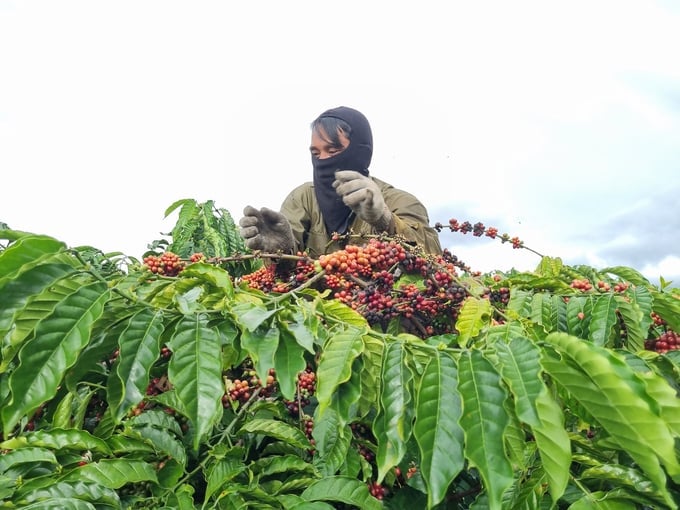
Gia Lai province is currently in the coffee harvesting season. Photo: Tuan Anh.
Gia Lai province has over 98,000 hectares of coffee production area, with more than 87,000 hectares of active production areas. These areas are concentrated in the districts of Dak Doa, Ia Grai, Chu Prong, Chu Pah, Mang Yang, Duc Co, and Kbang.
Gia Lai province is currently in the coffee harvesting season. According to local households, despite this year's substantial coffee prices at approximately 12,000 Vietamese dong for one kilogram of fresh cherries, the yield has significantly decreased, reaching just over 10 tons per hectare. This has resulted in a lower-than-expected profit for the majority of farmers.
The impact of off-season harvesting has partially affected the quality of the soil during the harvesting process. Gia Lai's local government and the agricultural sector are strengthening monitoring activities starting from the harvesting stage in order to raise product quality, with the aim of ensuring that over 80% of the coffee cherries are ripe.
However, the current state of production indicates that the majority of households are harvesting a significant amount of unripe coffee cherries, thereby reducing the quality of exportable coffee. Notably, companies and traders purchasing coffee cherries in the local key coffee production areas, such as Chu Pah, Ia Grai, and Dak Doa, are offering prices for ripe coffee that do not differ significantly from those for unripe coffee. This marginal price difference has failed to encourage farmers to harvest ripe high-quality coffee cherries.

Many farmers still prefer to harvest unripe coffee cherries. Photo: Tuan Anh.
With 1 hectare of coffee production area currently in the harvesting season, Mr. Pham Van Duy's family in Ia Lok hamlet, Ia Mo Nong commune, Chu Pah district is facing a dilemma. Despite a relatively healthy coffee farm, the yield has failed to meet Mr. Duy's expectations, reaching only 11 tons per hectare. Conversely, with the same area of production area, his family's coffee yield was nearly double in 2022.
Mr. Duy shared that his family harvested the first batch several days prior, selectively picking ripe cherries. However, he plans to harvest all of the coffee area for the second batch, despite only 70% of the cherries are ripe.
"If ripe coffee is purchased at a high price, the family is willing to follow the given procedures. However, at the moment, businesses and traders are purchasing coffee at relatively the same price between ripe and unripe coffee. As such, most households are not motivated to wait until the coffee cherries are ripe before harvesting," explained Mr. Duy. He also noted that harvesting unripe coffee can cause more cherries to fall, and result in the nutrient depletion of the coffee trees.
With 0.9 hectares of coffee production area ready for harvest, Mr. Nguyen Van Truong in Ia Ba commune, Ia Grai district shared that the local government warned his family against harvesting unripe coffee to improve the quality of exported coffee. However, the harvest of ripe cherries must be separated into multiple batches, thereby raising the cost of hiring labor. On the other hand, the purchasing price offered by traders is not significantly affected by the ripeness of the coffee, so the family opts to harvest in a single batch to reduce costs.
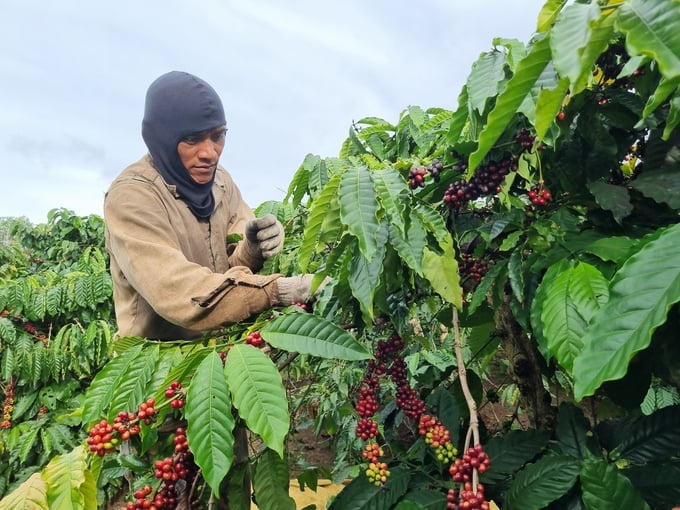
The marginal price difference between ripe and unripe coffee leaves many households disinterested. Photo: Tuan Anh.
Mr. Le Van Thanh, Director of the Ia Mo Nong Agriculture, Trade, Services, and Tourism Cooperative in Ia Mo Nong Commune, Chu Pah District, reported that the majority of local farmers are harvesting a high volume of unripe coffee cherries. Accordingly, businesses offer the same levels of purchasing price for both unripe and ripe cherries, unintentionally encouraging local farmers to deviate from the correct harvesting procedures.
"Ripe and appealing coffee cherries are only purchased at the same price as unripe ones, so how can we encourage farmers to follow the correct harvesting procedures? On the other hand, with a free market approach and no appropriate management mechanisms, the coffee industry will find it challenging to meet export standards in the future," Mr. Thanh shared.
According to Mr. Thanh, the government needs to issue strict regulations on the quality of coffee. Namely, coffee farmers are required to keep production records, follow care procedures, and meet specific requirements for the ripeness of coffee cherries. Additionally, origin traceability for coffee products is essential, accompanied by inspections and issue resolution when the coffee fails to meet quality standards. These measures are the only solutions to improving the quality of coffee for export and sustainable development.
During our visit to the 0.93-hectare coffee farm belonging to Ms. Nguyen Thi Huong from Team 19 at Ia Cham Coffee Trading Limited Liability Company, Ia Grai District, we were surprised to find a highly productive coffee farm with a fresh cherry yield of 19 tons. According to her, despite the lower productivity compared to that of 2022, the quality of the harvested coffee is consistent.
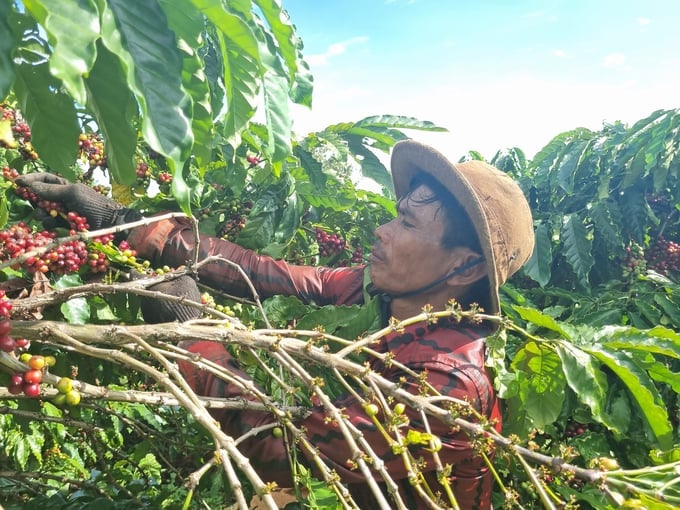
Businesses must consistently establish harvesting regulations to achieve over 90% ripeness and ensure high coffee quality. Photo: Tuan Anh.
Before entering the harvesting season, the company requires the first batch of harvested cherry must reach over 90% ripeness, subsequent batches of harvest may vary depending on the state of production with a minimum ripeness of 80%. On the other hand, a large amount of unripe cherries will be penalized. In addition, Ms. Huong mainly utilizes organic fertilizer, microorganisms, and avoids the use of herbicides on the family's coffe farm to ensure the high coffee quality.
Mr. Le Anh Tuan, Director of Ia Cham Coffee Company Limited, stated that according to the regulations imposed by the Vietnam National Coffee Corporation, member companies looking to export can only harvest with a ripeness rate of over 90%.
"The harvesting of ripe cherries will be more expensive in terms of labor. However, the company is required to wait until the cherries are ripe because our export partners purchase them at a higher price," Mr. Tuan shared.
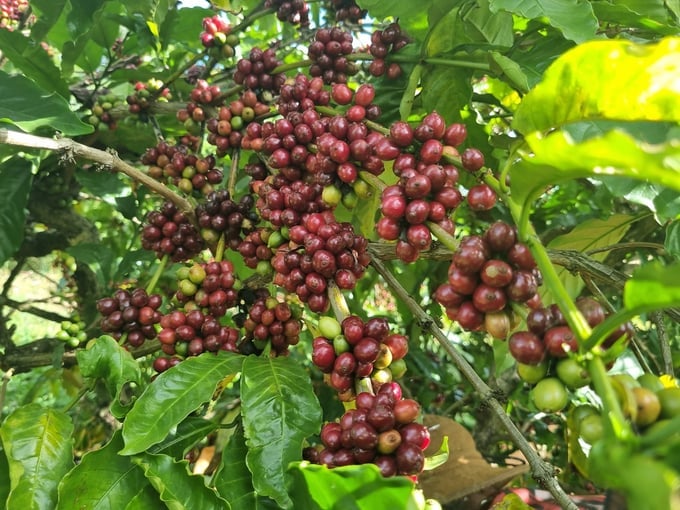
Harvesting ripe coffee beans will help businesses improve the quality of coffee, aiming for export. Photo: Tuan Anh.
Mr. Nguyen Ngo Hung, Acting Director of Ia Sao 2 Coffee Company in Ia Grai district, stated that the company currently owns over 460 hectares of harvestable coffee area. The company's expected yield in 2023 is approximately 7,000 tons, with 2,000 tons harvested. With the aim of ensuring high quality coffee during the harvest, the company requires that coffee cherries must reach 85% ripeness.
"With the goal of harvesting high-quality coffee, the company will process raw coffee before sending to the Vietnam National Coffee Corporation for further processing, thereby serving the export market more effectively," Mr. Hung shared.
Mr. Pham Dinh Tham, Head of the Agriculture and Rural Development Department in Ia Grai district, reported that at the beginning of the coffee harvesting season, the Department has advised local farmers to harvest ripe cherries, aiming for at least 80% ripeness to enhance the quality of local coffee products.
Accordingly, it is crucial to raise the awareness of local households regarding the harvesting of ripe cherries and maintaining the quality of their products to focus on exports. Additionally, local farmers need to participate in the coffee production chain with an emphasis on quality standards to significantly increase the purchasing price. The majority of local households have established a production chain with businesses to produce 4C-compliant coffee. Consequently, their products are being purchased at a higher price of approximately 2 million Vietnamese dong per ton.
Mr. Pham Dinh Tham highlighted that businesses involved in these production chains must also establish support policies to encourage local farmers to follow the correct coffee harvesting procedures. Furthermore, local governments need to implement solutions to discourage businesses and traders from purchasing unripe cherries. These measures are the only solutions to improving the quality of locally harvest coffee products.
Translated by Nguyen Hai Long

(VAN) The trade turnover of agro-forestry-fishery products is growing significantly, along with investment cooperation commitments that are opening up new development directions between Vietnam and Russia.
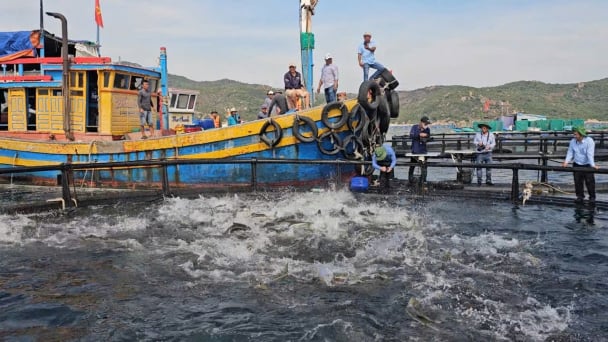
(VAN) Khanh Hoa is investing over 545 billion VND to develop 240 hectares of high-tech marine aquaculture in order to guarantee a consistent supply of seafood exports and achieve the USD 1 billion target.

(VAN) Minister of Agriculture and Environment Do Duc Duy held a meeting with Soopakij Chearavanont, Chairman of C.P. Group, on May 15.
/2025/05/16/3800-0-nongnghiep-143756.jpg)
(VAN) Suntory PepsiCo Vietnam coordinated with the Ministry of Education and Training to implement an education program on water conservation, reaching nearly 1 million primary school students nationwide.
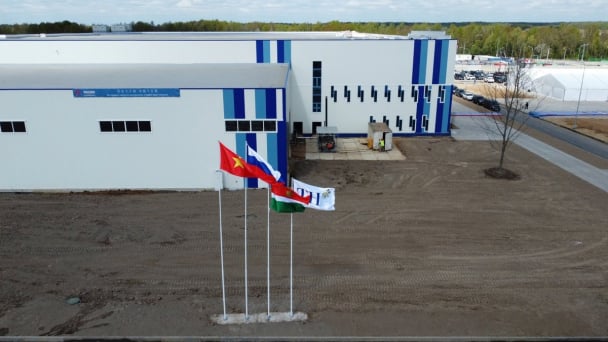
(VAN) Vietnam’s TH Group officially put its high-tech fresh milk processing plant into operation in the Russian Federation, marking a historic moment as the first TH true MILK cartons were produced in Russia.
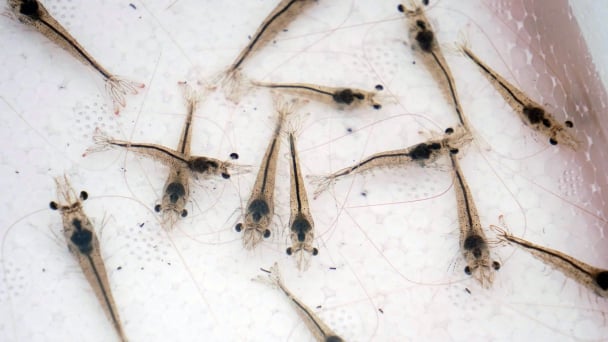
(VAN) Use of high-quality broodstock and biotechnology is regarded as the most effective approach to ensuring sustainable and economically viable shrimp aquaculture ahead of climate change and the emergence of increasingly intricate disease patterns.
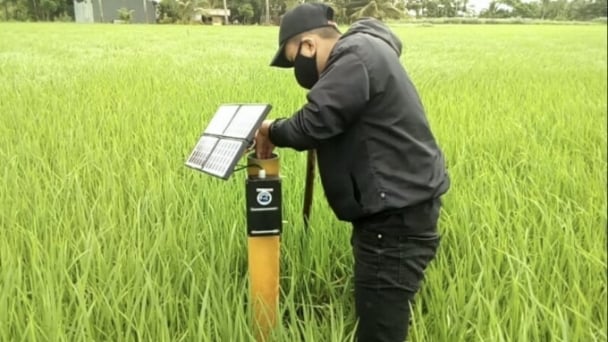
(VAN) Carbon farming is a form of agricultural practices that helps absorb more greenhouse gases than it emits, through smart management of soil, crops, and livestock.